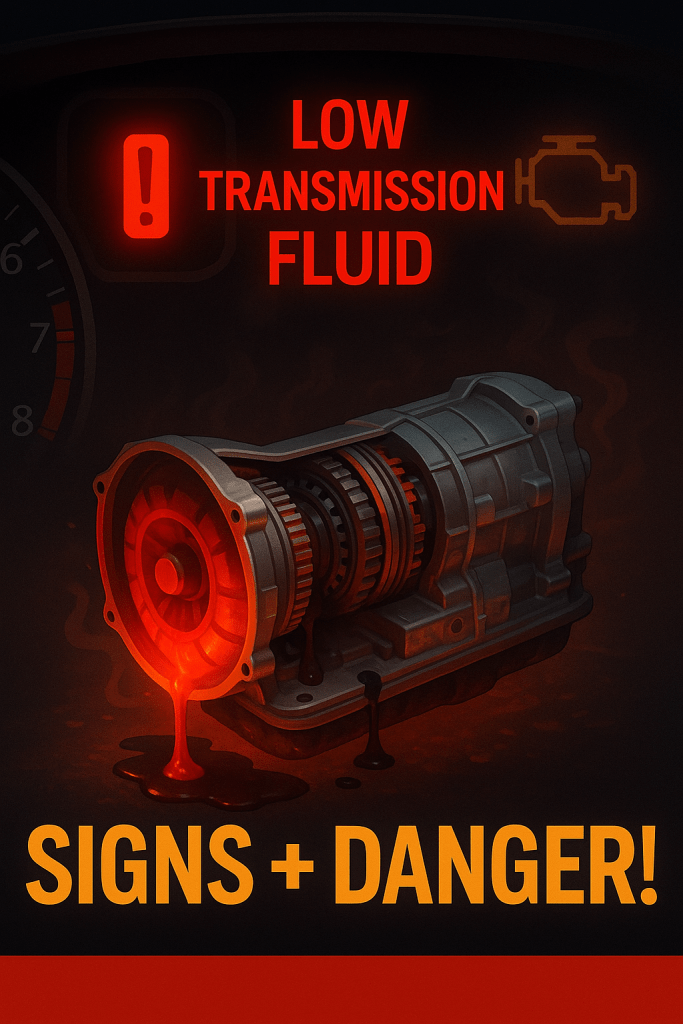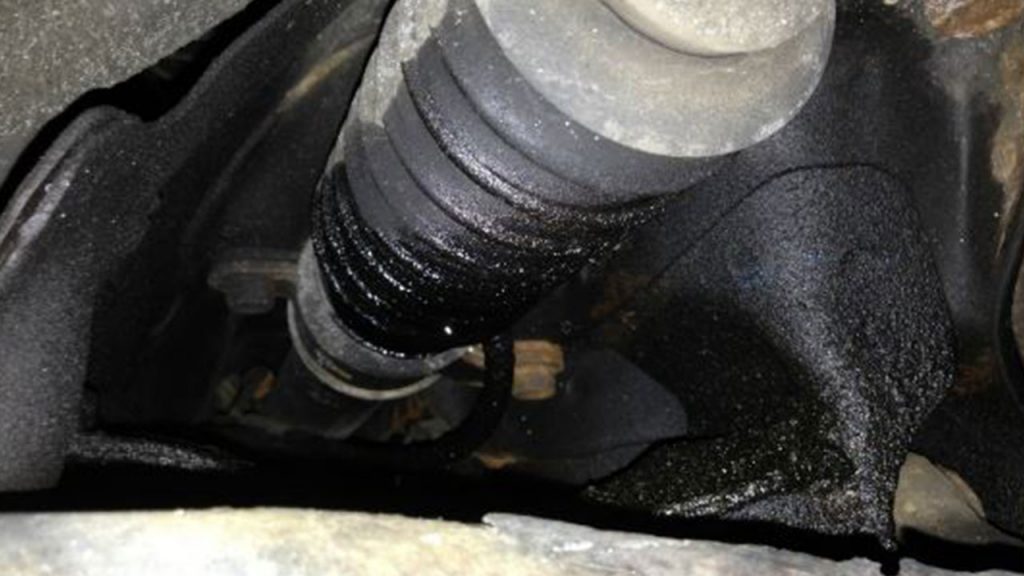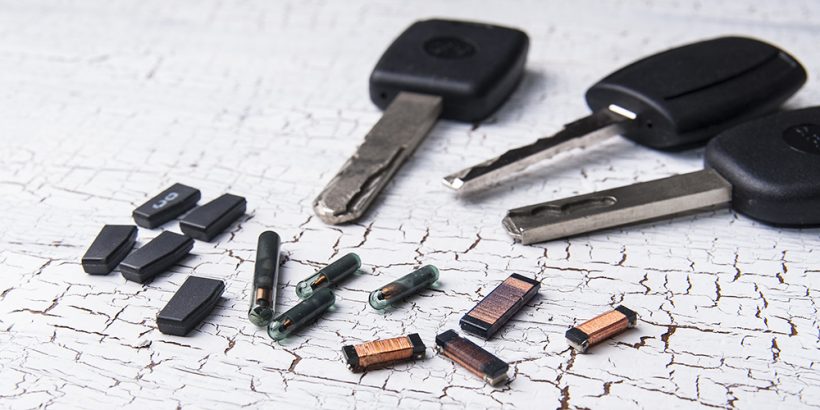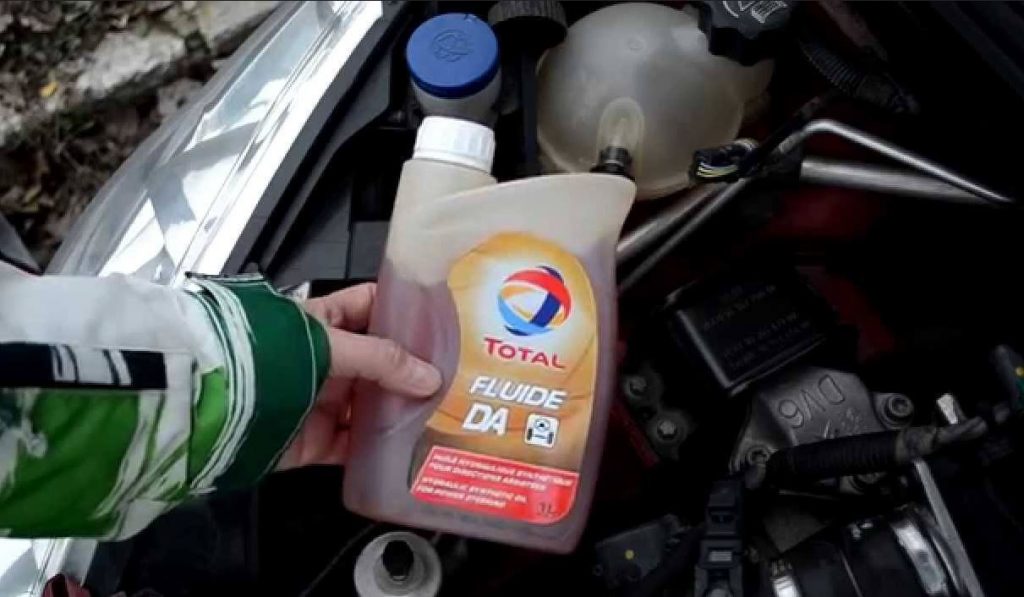Signs & Symptoms of Low Transmission Fluid and What Happens If You Keep Driving With It? So, If your car hesitates when you hit the gas, shudders a little, or just doesn’t feel right pulling out onto the highway. It might be something as little as a low transmission fluid, or is it something major?”
Well, let’s find out in today’s article, as we go through signs that your transmission fluid might be low, and more importantly, what could happen if you keep driving like that without fixing it. We have a video linked below on how to know if it is actually a transmission problem or a torque converter problem. because sometimes the symptoms can closely overlap with each other. How ever, in this post we covered, how to spot the signs and symptoms of low transmission fluid level in both automatic and manual cars, what noises to listen for, how to check your fluid, how to top it up the right way, and what it might cost to for both DYI approach and going to a shop. And you can also read this article here: Signs of a bad torque converter vs a Bad Transmission. So, let’s get started.
Signs & Symptoms of Low Transmission Fluid (What Happens If You Keep Driving With It?)
Signs of Low Transmission Fluid (Automatic & Manual)
Let’s start with what to watch for in Automatic transmission signs
If you drive an automatic, low transmission fluid can cause the car to slip between gears. You might press the gas, and instead of smooth acceleration, the engine revs up, but the car doesn’t respond right away. That’s a gear slip.
Another one is delayed shifting, like a hesitation before the car actually goes into gear when you shift from park into drive, or between gears as you accelerate.
Overheating is another sign. You might smell something burnt, or in some cars, you’ll see a transmission temperature warning light.
Manual transmission signs
For manuals, low fluid often shows up as trouble getting into gear, maybe it’s harder than usual to shift, or you hear a grinding sound when you do. Sometimes people think their clutch is going bad when really, it’s low fluid causing the problem.
Low fluid noises
Noises can give it away, too. Low transmission fluid might cause a whining, buzzing, or even a clunking noise as the transmission struggles to work without enough lubrication.
Signs while driving
If your fluid is low while you’re on the road, you might notice poor acceleration, like the car feels sluggish no matter how much you press the pedal. Or it slips out of gear at highway speeds, which can be pretty scary.

What Happens If Transmission Fluid Is Low?
And why is this such a big deal? Well, your transmission fluid does two critical jobs: it lubricates all those moving parts inside the transmission, and it helps keep everything cool.
If the fluid’s low, short-term, you’ll start to see those symptoms we talked about: slipping, slow shifts, overheating. But long-term? You risk real damage, burned clutches, worn-out bands, and even total transmission failure. And I mean, we’re talking repairs that can cost thousands.
People ask: How far can I drive on low transmission fluid? Honestly, I wish I could give you a number. But the truth is, every mile you drive like that is a gamble. You might get lucky for a bit, but eventually, the heat and friction will take a toll. “Limping along” isn’t worth the risk; what might’ve been a simple top-off can turn into a full rebuild.
How to Check Transmission Fluid.
If your car has a dipstick for the transmission fluid, it’s pretty straightforward. Warm up the car, park on level ground, leave it running in park, and pull the dipstick. Fluid should hit the “full” line; if it’s low, well, there’s your problem. And make sure the fluid’s the right color; clean fluid is usually bright red. If it’s dark brown or smells burnt, that’s a bad sign.
Now, some cars don’t have a dipstick. These sealed transmissions are trickier. Usually, checking or filling those requires special tools or access underneath the car, so it’s best left to a shop.
How to Fix Low Transmission Fluid
If you’ve confirmed it’s low, topping it off might help, but only if you know why it’s low. Fluid doesn’t just vanish. A small leak somewhere is likely.
If you’re topping off, make sure you’re using the exact type of fluid your car calls for. I know it sounds basic, but mixing the wrong fluids can cause more harm. Always check your owner’s manual.
Now, sometimes people ask: Do I need a full transmission fluid change, or can I just top it off? If the fluid’s still clean and you know why it was low, like maybe a leak you’ve fixed, a top-off might do. But if the fluid’s old, burnt, or contaminated, a full fluid change is the smarter move.
And as for cost? A top-off is cheap, usually just the cost of the fluid itself. A full transmission fluid change? Depending on your vehicle, it could run anywhere from $150 to $300 at a shop.

When the low transmission fluid light comes on, what to do immediately
If your car has a low transmission fluid warning light and it comes on, don’t wait. First, pull over somewhere safe, a parking lot, a side street, whatever works, and check your fluid level if your car has a dipstick.
And please, never open anything under the hood right after driving hard or at highway speeds. Let it cool for a few minutes so you don’t burn yourself on hot parts or fluid.
If the fluid’s low, add the correct type if you have it. But if you don’t have fluid with you, don’t keep driving far. Call for help or get it to a shop. Driving low on fluid can damage your transmission faster than you’d think
Why you should check for leaks, and where to look
Low fluid usually means there’s a leak. Fluid doesn’t just disappear.
Look under your car after it’s been parked overnight. If you see a reddish or dark brown puddle, that’s a clue. Common leak points? Around the transmission pan, the cooler lines, or where the driveshaft connects.
Oh, and sometimes the leak might not leave a puddle if it’s small, but you might see wet spots on the transmission casing itself.
How often to check or change the fluid for prevention
Check your fluid level, if your car has a dipstick, at least every oil change, or more often if you tow, drive in hot climates, or sit in traffic a lot. And as for fluid changes? Every 30,000 to 60,000 miles is a good rule for many cars, but check your manual because some newer transmissions have different intervals.
Don’t fall for the “lifetime fluid” claim. Nothing lasts forever, especially fluid that works as hard as transmission fluid does.
If your transmission fluid is low, you might notice slipping gears, slow or hard shifts, strange noises, or poor acceleration. Don’t ignore those signs, check your fluid, look for leaks, and get it fixed before small problems turn into big (and expensive) ones.













